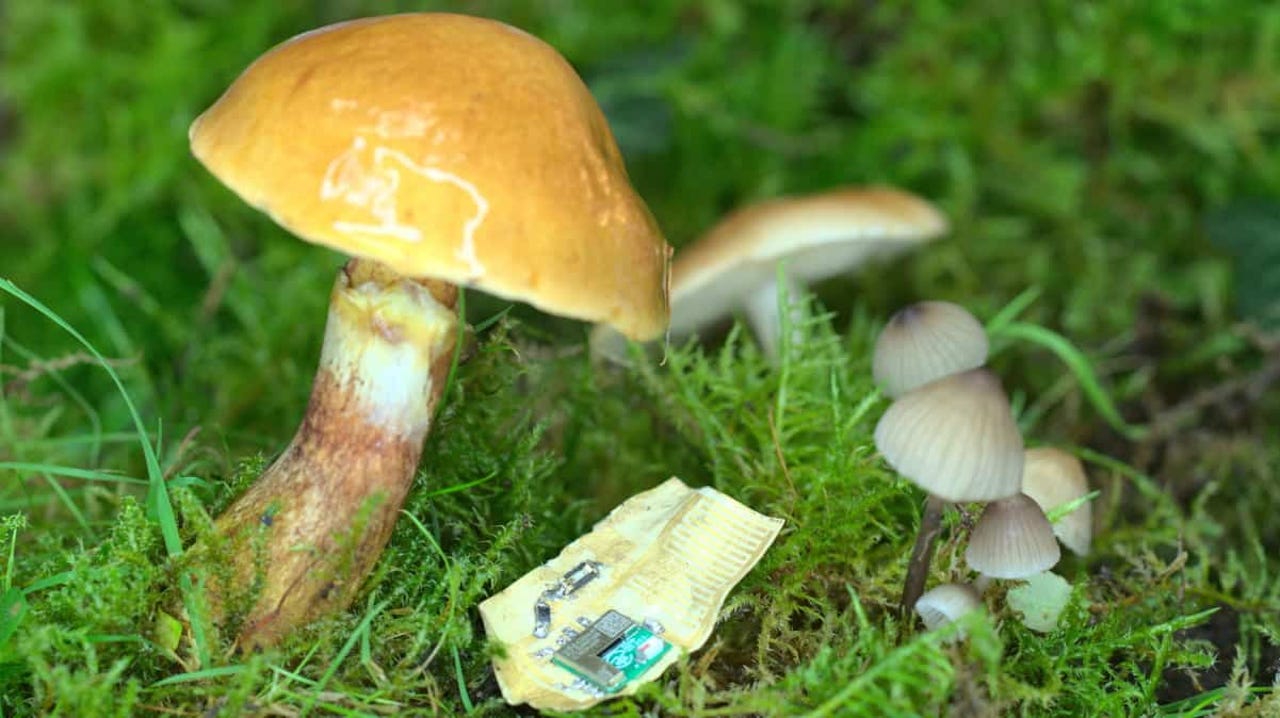
Researchers at the Johannes Kepler University in Austria have been able to replace unrecyclable plastic in the substrate of electronic chips and batteries with the skin of the Ganoderma lucidum species of mushroom
Doris Danninger, Johannes Kepler University
In the last few years, mushrooms have become truly magical.
They’ve become a favorite vegan substitute for leather. You can find high-end mushroom bags and clothing designed by the likes of Stella McCartney and Hermes displayed prominently in trendy boutiques. Mercedes-Benz is using mushrooms to make seat cushions for its upcoming, all-electric EQXX sedan. And hallucinogenic varieties of mushrooms have even been found to significantly alleviate treatment-resistant depression, sparking a revolution in mental-health healing.
Also: How to make tech more sustainable: 5 practical ways to make it happen
Now, researchers at Johannes Kepler University in Linz, Austria have unearthed what might turn out to be the most significant use for this humble fungi yet — one that could play a pivotal role in mitigating global warming.
A team headed by scientist Martin Kaltenbrunner recently devised a way to use hardy, easily-grown, fungi as a biodegradable base material — or substrate — for electronics chips. (Their findings were published in the journal Science Advances.)
Mushrooming e-waste
Kaltenbrunner has a long-standing obsession with the intersection of sustainability, material science, and engineering. For example, he completed research a few years ago that looked at employing sustainable materials in robotics.
When it came to his latest research, the team looked at the basic building block of all electronic circuits — computer chips — with the intention of redesigning the substrate, or the cooling base in which the circuitry sits and which is made of unrecyclable plastic polymers.
Also: How to track your carbon emissions with this new app
These plastics form the second-biggest component (at 37%) by mass in a chip, but are thrown away after use and sit on landfills, leaking CO2 for hundreds of years and contributing to the 50 million tons of e-waste generated every year.
The miracle of ‘myceliotronics’
Instead, unlike unrecyclable plastics that use petroleum in their manufacture, the mushroom used for this experiment was the Ganoderma lucidum, which grows on dead hardwood trees, and has a long history of promoting health and longevity in Asia.
The skin this mushroom generated to cover its root-like appendage, called a mycelium, from other fungi and bacteria was of great interest to the team.
Also: 5 ways to keep your smartphone working like new, for longer
When they dried out the skin and put it through its paces, they found it could withstand temperatures of 200°C (390°F), and was a very good insulator and conductor. The skin also easily accommodated circuit boards after being metalized and stiffened by the deposition of copper, chromium and gold.
Another favorable property of this impressive fungi was that it’s thickness is similar to paper — a substance that would have also worked as a substrate, but was rejected due to its highly water-intensive and toxic chemical-soaked process of production.
The mushroom-skin substrate was found to be both resilient and shape adaptive
Doris Danninger et al in Science Advances, Vol 8, Nos 45
The mushroom substrate, on the other hand, could be bent as much as 2,000 times without causing it distress and was so shape-adaptive that it transcended the kind of planar geometry in chip design that engineers have to wrestle with.
Also: Imagine your phone lasting 5 years. This company guarantees that
“The prototypes produced are impressive and the results are groundbreaking,” said Andrew Adamatzky, professor in unconventional computing at the University of the West of England, in New Scientist.
Kaltenbrunner and his crew envision the mushroom-encased chip will work in wearable, low-powered and short-lived bluetooth sensors for humidity and proximity, as well as in radio tags.
However, the mycelum’s ability to keep out moisture and UV light means it could easily last for a few hundred years. The research team is also advocating for a whole new concept of batteries after successfully using the mushroom skins as battery separators as well as casing.
Also: Tech and sustainability: How companies are getting started
The best news of all: the production of these mushrooms treads ever so lightly on the Earth — in fact, the more CO2 available for their production, the better. The team was able to effortlessly grow and harvest mature mycelium on beechwood in just four weeks.
And, when the time is up for these devices, they can quietly biodegrade in any soil and vanish in under two weeks — which is the kind of dream that engineers need to embrace to save the world from the onslaught of unsustainable electronic consumption.